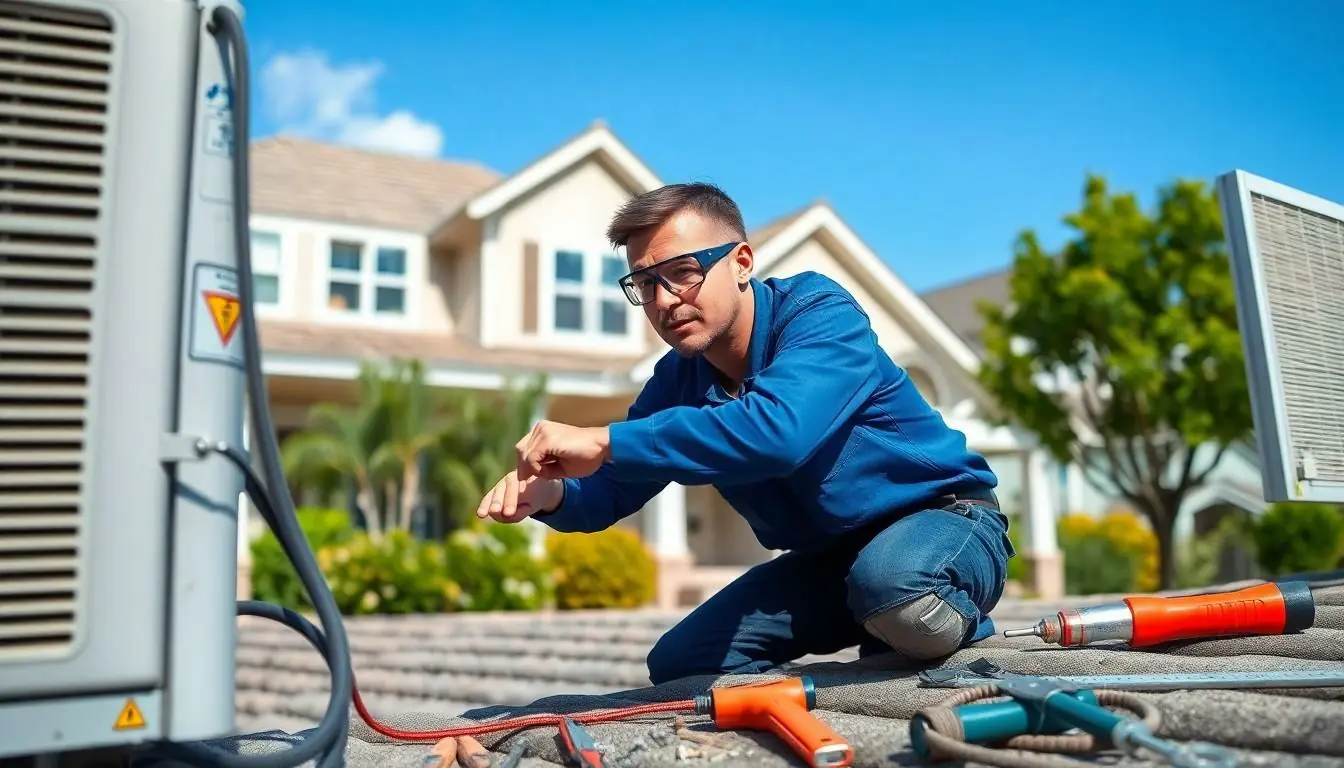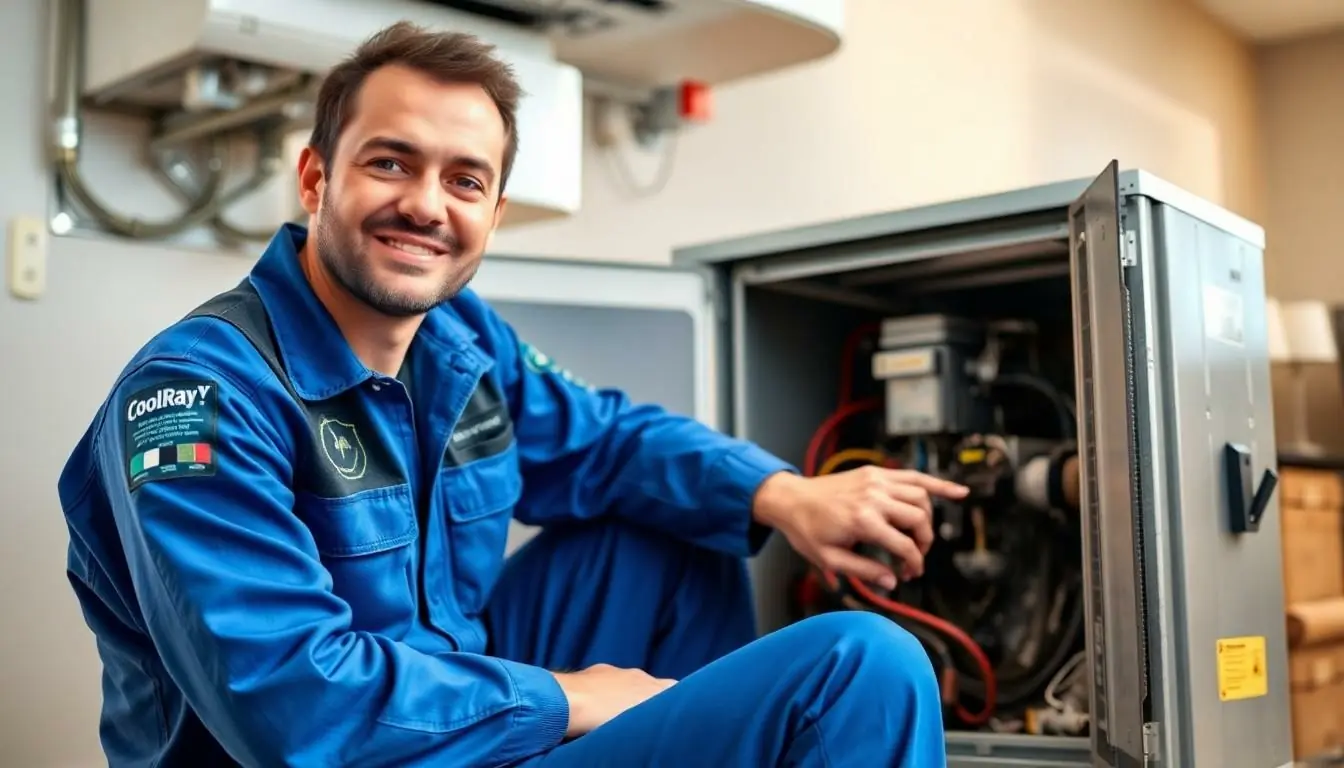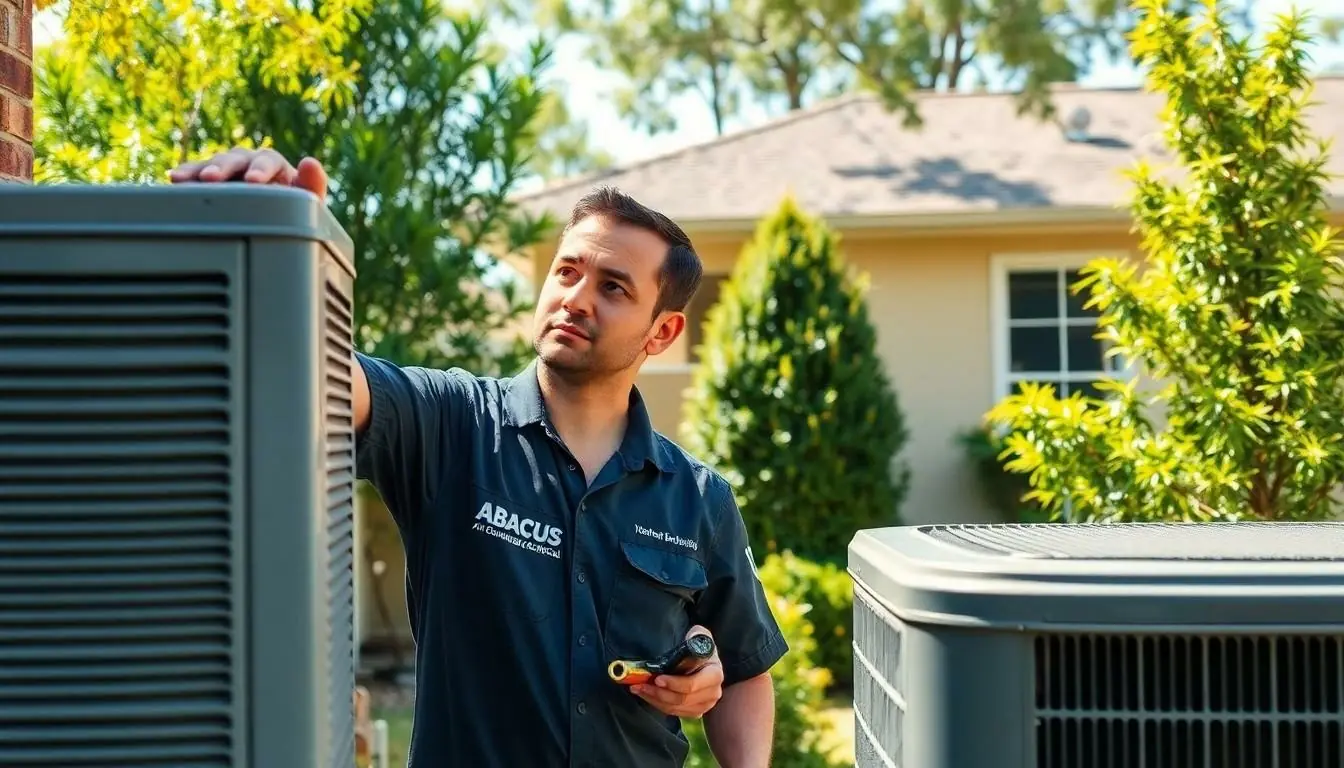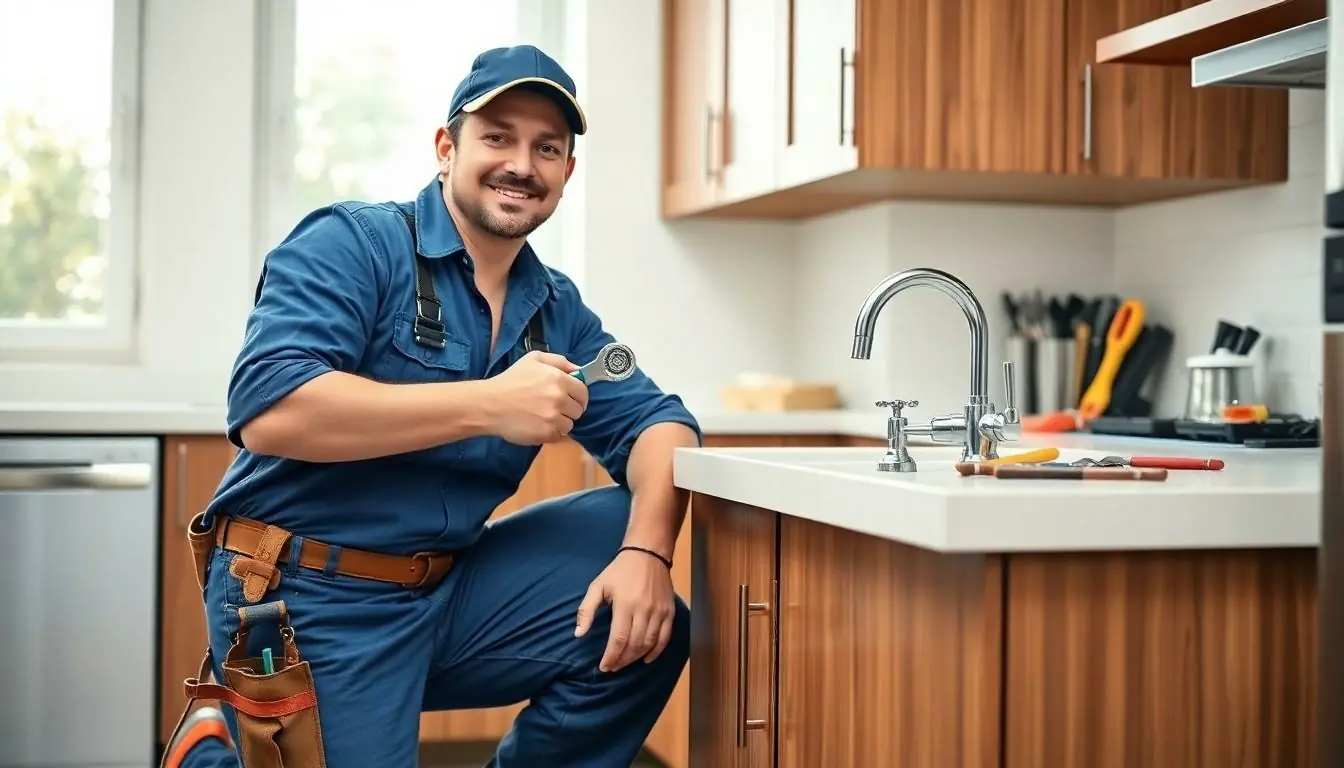Table of Contents
ToggleIn the world of home comfort, HVAC, plumbing, and electrical systems are the unsung heroes, working tirelessly behind the scenes. It’s easy to take them for granted until that fateful moment when the AC decides to take a vacation or the pipes start sounding like a jazz band. Suddenly, those systems aren’t just utilities; they’re the lifelines of a cozy home.
Overview of HVAC, Plumbing, and Electrical Systems
HVAC systems manage heating, ventilation, and air conditioning, playing a crucial role in indoor climate control. Effective operation ensures comfort during extreme temperatures. This system consists of components like furnaces, air conditioners, and ducts that work together seamlessly.
Plumbing systems deliver and drain water throughout a home. These systems include pipes, fixtures, and appliances. Proper installation and maintenance of these elements prevent leaks and ensure efficient water usage. Homeowners often rely on plumbing to support daily activities, from bathing to cooking.
Electrical systems provide power to various devices and appliances. Wiring, outlets, and circuit breakers form the backbone of electrical distribution. A well-designed electrical system guarantees safety and accessibility for all electrical needs. Routine checks and upgrades reduce the risk of electrical hazards.
Integration of HVAC, plumbing, and electrical systems creates a harmonious living environment. Homes depend on these systems for comfort, convenience, and efficiency. Regular maintenance of each system enhances performance and prolongs lifespan. Understanding each system’s functions facilitates proactive care and timely repairs. Collectively, these components contribute to a well-functioning household.
Importance of HVAC Plumbing Electrical Integration
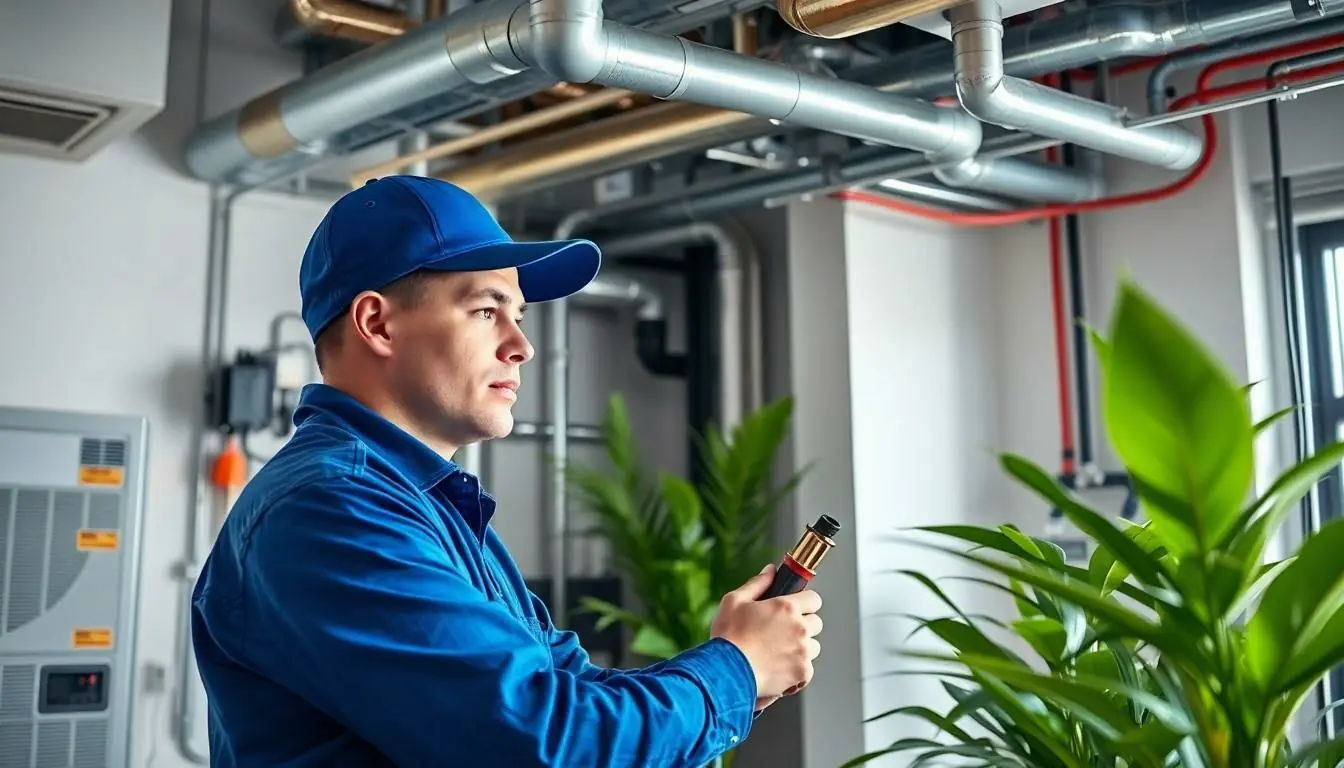
Integrating HVAC, plumbing, and electrical systems optimizes home efficiency and comfort. Such integration streamlines functionality and enhances system performance.
Benefits of Combined Systems
Combined systems yield significant energy efficiency. Homeowners often reduce utility bills when HVAC systems work seamlessly with plumbing and electrical setups. Improved air quality provides healthier environments as proper ventilation prevents moisture buildup. Coordination between these systems minimizes potential disruptions, enhancing overall reliability. Integration also simplifies maintenance processes, allowing technicians to address multiple issues in one visit. Streamlining repairs improves time management and reduces costs for homeowners. Creating a unified system promotes effective temperature regulation, ensuring comfort regardless of weather conditions.
Challenges in Integration
Integration may lead to challenges in design and installation. Complicated layouts can arise when relocating equipment, risking compatibility issues among systems. Technicians often encounter obstacles in ensuring safety and complying with building regulations. Furthermore, coordinating between different contractors complicates project timelines and communication. Identifying common standards for installation requires careful planning, as each system has unique requirements. Ongoing maintenance can also pose difficulties because interconnected systems might complicate troubleshooting. Addressing these challenges demands expertise, careful coordination, and thorough planning to achieve successful integration.
Key Components of Each System
Understanding the essential elements of HVAC, plumbing, and electrical systems is crucial for effective home maintenance. Each system features specific components that play significant roles in their function.
HVAC Components
Furnaces and air conditioners represent primary HVAC components, providing temperature control throughout the home. Ductwork distributes heated or cooled air, affecting room comfort. Thermostats allow users to set desired temperatures, while ventilation fans improve indoor air quality by circulating fresh air. Heat pumps offer an alternative for both heating and cooling needs, enhancing energy efficiency. Regular inspections ensure these components function correctly to avoid costly repairs.
Plumbing Components
Pipes form the backbone of plumbing systems, transporting water to fixtures such as sinks and showers. Fixtures like faucets and toilets play key roles in water usage. Water heaters provide hot water for daily activities, while drainage systems remove waste efficiently. Valves control water flow, essential for maintenance and repairs. Proper installation prevents leaks and promotes efficient water delivery, enhancing overall system performance.
Electrical Components
Circuit breakers safeguard electrical systems by preventing overloads. Wiring ensures safe power distribution to outlets and fixtures throughout the home. Switches allow control over lighting and appliances, promoting convenience. Electrical panels serve as the heart of the system, managing energy flow. GFCI outlets provide safety in wet areas, reducing the risk of electric shock. Regular upgrades maintain safety and efficiency across electrical components, ensuring reliable power supply.
Best Practices for Installation and Maintenance
Ensuring optimal performance of HVAC, plumbing, and electrical systems requires careful attention during installation and consistent maintenance. Adopting best practices in these areas enhances system longevity and reliability.
Installation Considerations
Choosing the right equipment plays a critical role in installation. Select HVAC systems that match the home’s square footage and climate requirements. Plumbing installations must adhere to local codes, ensuring all pipes are properly sized and routed. Proper electrical wiring techniques increase safety and minimize operational risks. Testing each system after installation confirms functionality, while enlisting licensed professionals ensures compliance with regulations. Opt for quality materials, as they reduce the likelihood of future repairs.
Regular Maintenance Tips
Establishing a maintenance schedule is vital for each system’s efficiency. HVAC systems benefit from biannual inspections and filter replacements to enhance air quality. Plumbing checks should include inspecting for leaks and drain clogs, which prevent costly repairs down the line. Electrical systems require regular evaluations of circuit breakers and outlets to ensure safety and prevent malfunctions. Keeping up with maintenance tasks fosters a well-functioning home environment, contributing to comfort and energy savings.
Maintaining a well-functioning home requires a keen understanding of HVAC, plumbing, and electrical systems. These systems play a vital role in ensuring comfort and safety. Homeowners who prioritize regular inspections and maintenance can prevent costly repairs and enhance energy efficiency.
By investing in the right equipment and adhering to best practices, they can create a harmonious living environment. Awareness of potential integration challenges can lead to better planning and coordination with professionals. Ultimately, a proactive approach to these essential systems not only improves comfort but also contributes to a more sustainable home.

